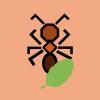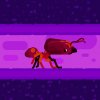Edited by Artisan_Ants, March 8 2024 - 8:38 AM.
- Formiculture.com
- Forums
- Gallery
- Members
- Member Map
- Chat

Edited by Artisan_Ants, March 8 2024 - 8:38 AM.
Keeping:
3x - S. molesta (colonies and single queen) 1x - C. nearcticus (founding but no eggs) ![]() New!
New!
1x - C. chromaiodes (colony) 1x - C. subbarbatus (founding)
1x - F. subsericea (founding) 1x - T. sessile (mega colony)
3x - P. imparis (colonies)
2x - L. neoniger (founding)
Check out my C. nearcticus journal here: https://www.formicul...cticus-journal/
Check out my C. chromaiodes journal here: https://www.formicul...aiodes-journal/
Keeping:
3x - S. molesta (colonies and single queen) 1x - C. nearcticus (founding but no eggs) ![]() New!
New!
1x - C. chromaiodes (colony) 1x - C. subbarbatus (founding)
1x - F. subsericea (founding) 1x - T. sessile (mega colony)
3x - P. imparis (colonies)
2x - L. neoniger (founding)
Check out my C. nearcticus journal here: https://www.formicul...cticus-journal/
Check out my C. chromaiodes journal here: https://www.formicul...aiodes-journal/
Keeping:
3x - S. molesta (colonies and single queen) 1x - C. nearcticus (founding but no eggs) ![]() New!
New!
1x - C. chromaiodes (colony) 1x - C. subbarbatus (founding)
1x - F. subsericea (founding) 1x - T. sessile (mega colony)
3x - P. imparis (colonies)
2x - L. neoniger (founding)
Check out my C. nearcticus journal here: https://www.formicul...cticus-journal/
Check out my C. chromaiodes journal here: https://www.formicul...aiodes-journal/
Ants are small creatures... but together... they can rule the world.
P. imparis is easy to spot because they are golden in the sunlight and they have this distinctive waddle. The queens always seem so harried and freaked out running along looking for a place to hide. I hope your queens do well. It does seem to be their time in the region.
They have such big round gasters for their bodies and such dainty little legs. Not made to run, but still run they must! waddle waddle waddle. I think they are pretty cute as queens go.
Starting this July I'm posting videos of my ants every week on youTube.
I like to make relaxing videos that capture the joy of watching ants.
If that sounds like your kind of thing... follow me >here<.
Look under or around forested areas and woodlands. You’ll find a whole bunch of them! My place isn’t covered with them; but they are still around in multiple locations. Look after days with rain or thunderstorms. The temp has to be about 70º F for them to fly. They hate lower temps like 50 or 60 even after good rains. Workers look like a larger version of Lasius; they have larger gasters which are in the same shape; but they also have larger and longer legs unlike that of Lasius workers. You’ll see what I mean if you see them in person. No wonder they are in the same tribe (Lasiini)…No way! I found an active post in the Anting subforum that isn’t from California! How do you find so many P. imparis? I can barely find workers.
Keeping:
3x - S. molesta (colonies and single queen) 1x - C. nearcticus (founding but no eggs) ![]() New!
New!
1x - C. chromaiodes (colony) 1x - C. subbarbatus (founding)
1x - F. subsericea (founding) 1x - T. sessile (mega colony)
3x - P. imparis (colonies)
2x - L. neoniger (founding)
Check out my C. nearcticus journal here: https://www.formicul...cticus-journal/
Check out my C. chromaiodes journal here: https://www.formicul...aiodes-journal/
I still can't find them I see workers everywhere and even dead males but I still can't find queens. Even in forested areas.
Currently keeping: 2 C.vicinus colonies.2 C.sansabeanus. 1 C.leavissimus. 2 C.Ca02. 1 V.pergandei. 4 T.immigrans.1 F.pacifica. 1 C.hyatti
1 M.ergatognya
Trying to get my hands on :C.modoc,A.vercicolor, and Any Honeypots
Mb. I forgot to mention that they live near open fields that are right next to forested areas (that where I find mine) or fields that are at least a couple hundred or so feet away from one. You can find them on meadows still but they typically prefer nesting near wooded areas for the multiple resources available. They do not prefer higher temps to fly once again, and they do not prefer high temps to forage either. Mine only FLY in the 70º F range. As I stated before (and I’m completely wrong on this) they will forage at lower temps, like at 40º F which is crazy. But if you want to find workers; look in temps at 50 or 60º F range and look for queens after some good rain and humidity percentage at about 30 - 40% with 70º F temperature range.I still can't find them I see workers everywhere and even dead males but I still can't find queens. Even in forested areas.
Keeping:
3x - S. molesta (colonies and single queen) 1x - C. nearcticus (founding but no eggs) ![]() New!
New!
1x - C. chromaiodes (colony) 1x - C. subbarbatus (founding)
1x - F. subsericea (founding) 1x - T. sessile (mega colony)
3x - P. imparis (colonies)
2x - L. neoniger (founding)
Check out my C. nearcticus journal here: https://www.formicul...cticus-journal/
Check out my C. chromaiodes journal here: https://www.formicul...aiodes-journal/
Keeping:
3x - S. molesta (colonies and single queen) 1x - C. nearcticus (founding but no eggs) ![]() New!
New!
1x - C. chromaiodes (colony) 1x - C. subbarbatus (founding)
1x - F. subsericea (founding) 1x - T. sessile (mega colony)
3x - P. imparis (colonies)
2x - L. neoniger (founding)
Check out my C. nearcticus journal here: https://www.formicul...cticus-journal/
Check out my C. chromaiodes journal here: https://www.formicul...aiodes-journal/
 |
Anting →
General Anting →
Canadian Ant Watch ThreadStarted by OwlThatLikesAnts , Mar 12 2025 |
|

|
|
Anting →
General Anting →
Camponotus sayi Nuptial Flight?Started by AntsTx , Sep 2 2024 |
|

|
||
 |
Anting →
General Anting →
Conditions for Desert Flights: A look into thunderstormsStarted by UtahAnts , Aug 4 2024 |
|

|
|
I got some new queensStarted by cooIboyJ , Jul 22 2024 |
|

|
||
Two Queens in need of ID- Wilmington, NC, US 06/15/2024Started by BahamianBoy , Jun 15 2024 |
|

|
0 members, 1 guests, 0 anonymous users